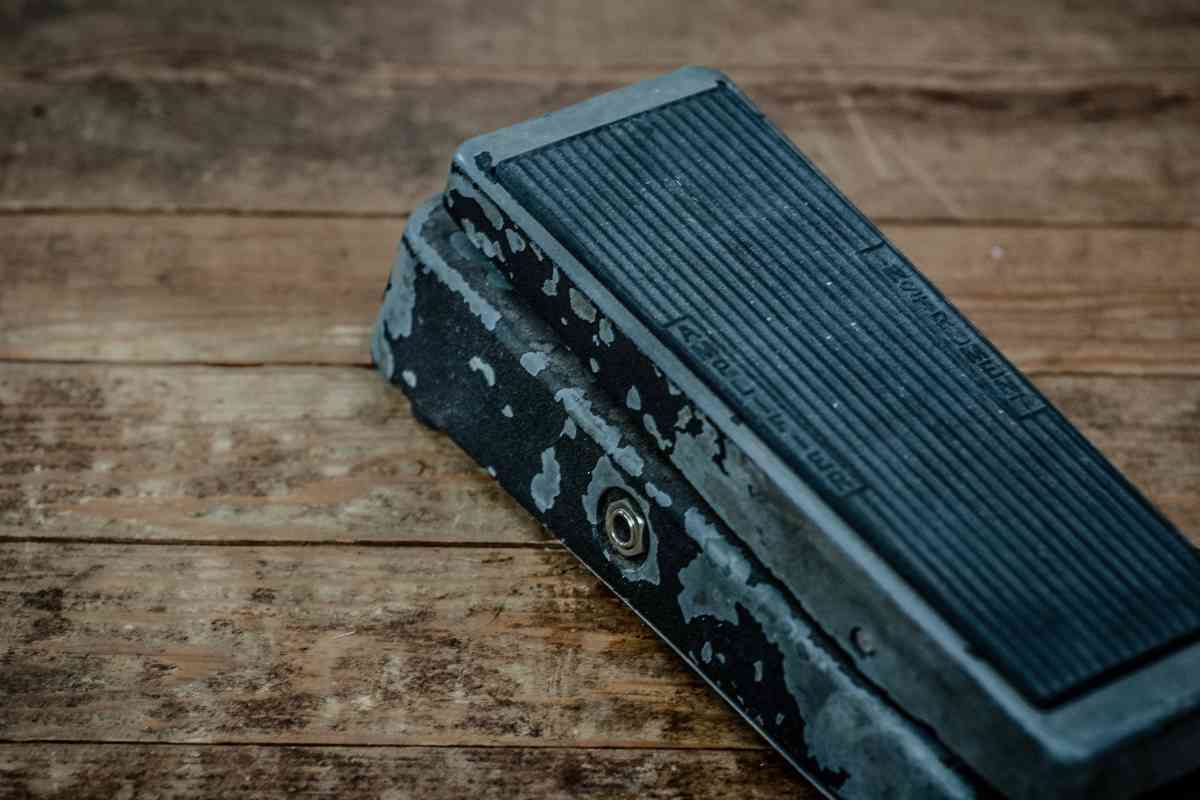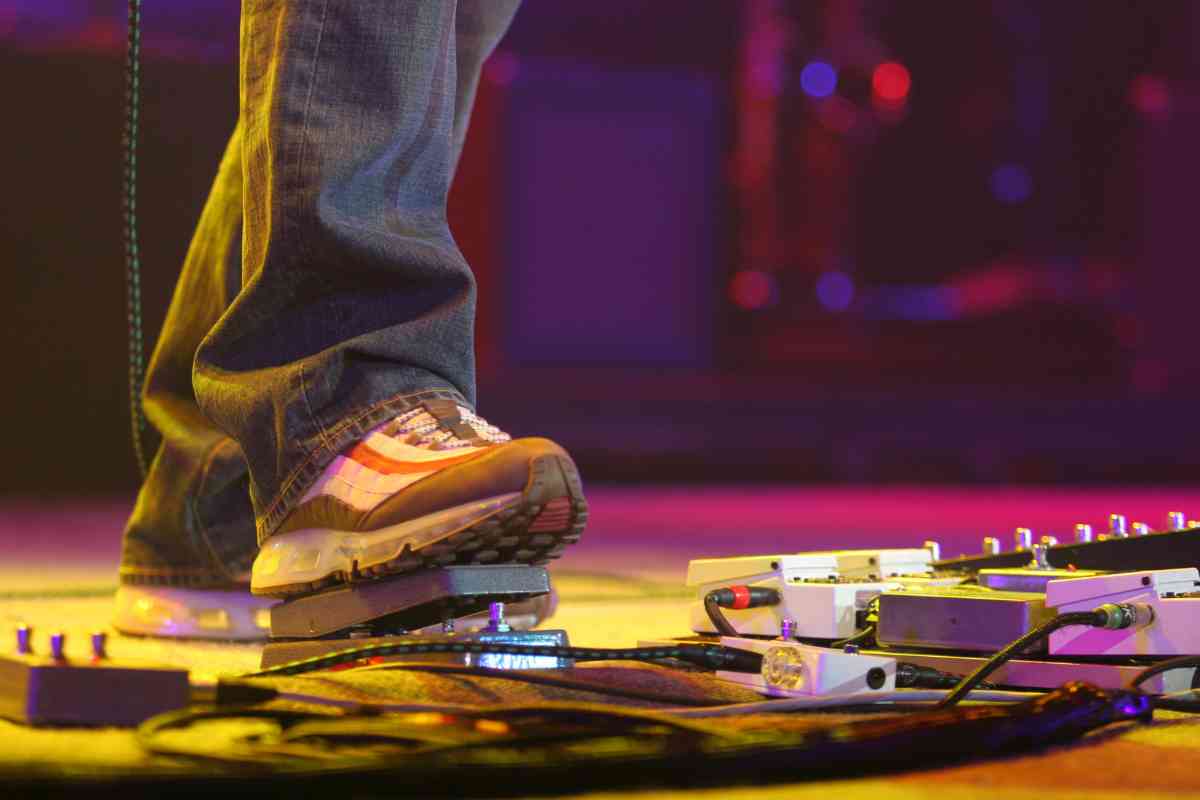Volume pedals may not produce the exciting sounds that other more transformative effects do, but these devices significantly impact dynamics. They’re commonly used by electric guitarists, keyboardists, and sometimes bassists.
Most commonly, a volume pedal should be placed at the beginning of the signal chain. This position allows the pedal to control the dynamics of the signal before any other effects from other pedals or gain from an amplifier are applied, resulting in an overall cleaner tone.
As is the case with all effects pedals, there are no concrete rules to abide by when positioning a volume pedal. Placing it in specific positions will get predictable results. Still, if you like to experiment and create unique sounds, there are other potential placements for the device that you might find interesting.
This guide will discuss where to put a volume pedal in your signal chain and how different positions can affect your tone and dynamics.
Where to Put a Volume Pedal in the Signal Chain
The position of an effects pedal in the signal will noticeably alter how it sounds. Many guitarists underestimate the signal chain placement’s impact on how their effects pedals perform.
Volume pedals belong to the dynamic family of effects. They’re categorized with compressors, EQ, noise gates, and boost pedals, all of which directly affect the loudness of certain frequencies.
In a conventional signal chain, dynamic pedals are placed at the front of the chain. Then come any gain-based pedals, such as distortion, fuzz, or overdrive.
Modulation pedals, like chorus, phasers, flangers, or octave shifters, come next before the chain is completed with reverb and delay effects.
The reason that volume pedals and other dynamic effects are placed at the beginning of the chain is that this allows them to affect the signal when it is at its cleanest, with no other effects impacting the dynamics.
The only pedal that comes before the volume pedal is your tuner so that the frequencies of the guitar can be accurately tracked without interference from any other pedals.
Placing a volume pedal at the beginning of the chain means you can control the level of your instrument when it is clean, which then affects how all the other effects in the chain sound when turned on.

What is a Volume Pedal?
The purpose of a volume pedal is easy to figure out based on its name, but many musicians need to be made aware of the versatility of these devices.
Indeed, you can use a volume pedal simply to make the guitar signal louder or quieter. A rocker plate mechanism, similar to a wah-pedal, is controlled by your foot to adjust the level.
When placed at the beginning of your signal chain, the pedal works like the volume pot on your electric guitar. You can silence the instrument by turning it all the way down or add volume by turning it up.
In addition to being used for this basic purpose, electric guitarists often use the volume pedal to produce more interesting sonic results.
Volume pedals are great for producing a swelling effect, and you’ve probably heard this on countless recordings or during live performances. A swell is created by gradually increasing the volume of the pedal, making slight adjustments to the level.
This swelling sound is similar to a fade-in, and when it is done well, it creates an interesting and immersive effect that can also be combined with other, more transformative pedals.
For example, if you use delay and reverb on your guitar signal, you can then use the volume pedal to bring the sound in gradually from silence, creating an atmospheric effect.
Other Volume Pedal Signal Chain Positions
One of the great things about effects pedals is that they give musicians the opportunity to sculpt their sound. By adjusting the array of onboard controls and parameters, you can create unique tones that suit your musical style.
Signal chain placement is another aspect of effects pedals that give the musician dominion over their sound.
As we’ve discussed, there is a suggested order of effects pedals that most musicians like to follow. However, like all musical topics, signal chain placement is ultimately subjective, and the rules are there to be broken.
By experimenting with different positions for your volume pedal, you may stumble across a sound or effect that you find interesting. Therefore, I’d recommend spending some time playing around with different orders to see what you discover.
It’s important to keep in mind that wherever you place the volume pedal, any other effects that come before it in the chain will not be affected by it.
For example, if you place the volume pedal after your overdrive, this effect will not be altered when you adjust the signal level. Only the pedals that come later in the chain, such as your modulation, reverb, and delays, will be affected.
Some guitarists like to place their volume pedal in the middle of the chain. This allows them to use it as a boost for the gain stage of their effects so that the volume can be altered without affecting the modulation pedals.

How to Use a Volume Pedal
Using a volume pedal is very straightforward. The standard design resembles that of a wah pedal, and the volume is muted when you press the rocker plate all the way down. When you bring it back up, the volume is set to full.
If you’ve never used a volume pedal before, it may take a little time for you to become accustomed to how it works. Depending on the sensitivity of the rocker plate, you may need to apply some force to adjust the volume.
High-end volume pedals also often have built-in tuners, which is very useful if you need to save space on your pedalboard.
To use a volume to create fade-ins and fade-outs, simply start it from the lowest or highest volume setting, then move the pedal slightly and slowly to gradually change the level.
Volume pedals can be great tools for live performances, rehearsals, and recordings. They allow you to quickly mute your guitar if it is feeding back or if you need to alter your amp settings, for example.
On the whole, there are no specific rules that you must follow when using a volume pedal. The best method is to get stuck in and figure out how you want to use the device to enhance your overall sound and dynamics.
Related Questions
Can a volume pedal be used in an effects loop?
Placing a volume pedal in an effects loop can be effective, but the pedal must be active and ideally have an impedance of around 25K Ohm. A high-power passive volume pedal will not provide you with desirable results and may cause noise issues.
Can bassists use a volume pedal?
Although volume pedals are predominantly used by electric guitarists, bass players can also benefit from the control they afford them over their instrument’s dynamics. Volume pedals are great for increasing the level of a bass solo or dropping it down during a breakdown section.
Do volume pedals impact tone?
Passive volume pedals can potentially impact the tone of your instrument. This is because they don’t have a built-in buffer, and therefore you may experience some alterations to the frequency response of your instrument’s signal.
